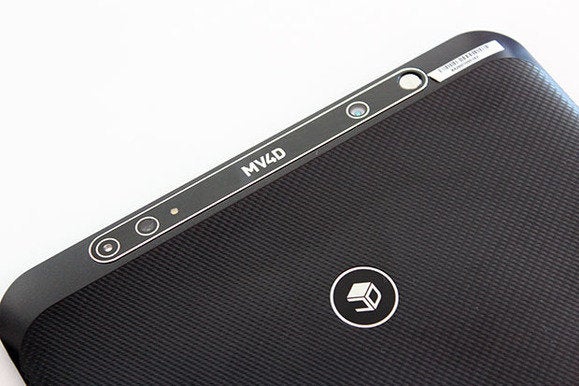Despite the prevalence of 3D in modern consumer culture—scores of TVs, popular movies, and and Amazon’s Fire Phone, for example—3D technology has a long road to travel before it becomes fully mainstream. That’s where Mantis Vision, the company behind the 3D mapping technology used inside Google’s Project Tango tablet, hope their tablet and SDK will inspire others by making it a cinch to create 3D content.

“We want to make it not only as easy as possible…we want to have an open standard in the market,” said Amihai Loven, CEO of Mantis Vision. The Mantis Vision tablet is called Aquila, and it specializes in scanning and photographing physical objects and then rendering them into interactive 3D scenes. It also works with real-time streams and 3D video, so none of the content it creates is static.

The tablet is manufactured by Flextronics. It’s basic-looking, and it resembles a typical mid-range Android tablet, and inside it’s powered by a Qualcomm Snapdragon 801 processor, 64GB of storage, and 2GB of RAM. Aquila is also packed with a Sony IMX135 13-megapixel CMOS image sensor, a Omnivision OV9714 1-megapixel near infrared camera sensor, an IR flash projector, and a white LED flash. These four components are used in tandem to record content, but it’s Mantis Vision’s SDK that helps transform that content into 3D.

The Aquila tablet makes it look easy to do: record a video with the tablet’s rear-facing camera and IR sensors, and then plug it into the application to render a three-dimensional model of the subject. The end result is a 360-degree model, complete with side profiles and shadows. Even extraneous parts of the recording, like the wall or a trash bin, make it into the render.

Loven had me try on a Google Cardboard headset to experience the technology in motion. I swiveled around in an office chair with the goggles on and was interacting with a 3D-rendered version of a man driving a car on a road. It wasn’t refined like like an Oculus Rift or Samsung Galaxy VR demo, but it was a good example of what’s possible for a tinkering developer to make with just his Android device.
If this sounds somewhat familiar, that’s because Google’s Project Tango is very similar. In fact, Mantis Vision actually partnered with Google in February to include its 3D-sensing technology in the Project Tango developer tablet. But Loven wants the Aquila tablet to stand out from Google’s offering. “Tango is limited,” he explained. “The motivation there is to create an ecosystem of hardware, so [that it’s a] commodity. We try to differentiate our technology. We’re trying to push the performance and the usage of content creation to the edge.”
Loven added that Mantis Vision is targeting two particular demographics with the Aquila tablet. The first is application developers, specifically “those that want to do augmented reality—if they want to just develop a game they can work on top of the Vuforia SDK and develop their games over it.”
The second group are content creators, “those that would kill to put their hands on something that could create such quality data instantly by just capturing.” Mantis Vision isn’t wholly focused on consumers as its target market, but it hopes that the developers will take its technology and make things that anyone can indulge in. “We are hoping that there will be a standard of 3D videos that will grow, and it’s very possible that we will work with different open source communities that want to contribute to the platform because of their needs,” said Loven. He added that hopes that developers will use the open SDK to develop 3D rendering technology that’s just as easy as applying a filter to a photo on Instagram, for instance.
If you’re a developer and interested in the Aquila development kit, you can pre-order it for $925 at Qualcomm’s Uplinq mobile developer conference this week in San Francisco; otherwise the development kit will be available to order in early 2015 through varying licensing partners.




